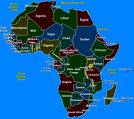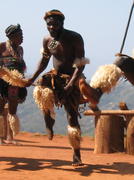A WebQuest on African Geography
For the 5th grade
Designed by Kimberlee Christian
kmoorcroft@msn.com

Introduction | Task | Process | Evaluation | Conclusion | Credits | Teacher Page
A WebQuest on African Geography
For the 5th grade
Designed by Kimberlee Christian
kmoorcroft@msn.com

Introduction | Task | Process | Evaluation | Conclusion | Credits | Teacher Page
http://www.historyforkids.org/learn/africa/index.htm
http://www.africaphotos.com/index.htmTo begin this unit we will talk about the continent of Africa in class. As a class we will spend time reading the book Africa Is Not A Country by Margy Burns Knoght and Mark Melnicove. Your first task will begin after we have finished the book. What is the difference between a continent and a country? This is the question you need to research.
Task #1 ~ Country or Continent?
1) Think about it! Is Africa a country?
2)Look up the definition of a country and look up the definition of a continent. Compare and contrast the two definitions. Use a the chart provided in class to complete this assignment. Be prepared to share your results with your table groups.
Click HERE for a Kidspiration chart to use as you compare and contrast
We will talk about our research together as a class. Be prepared to share your findings with your table groups. Honestly think about what you had thought before you conducted your research. Did you think of Africa as a country or as a continent? Now lets look into this further... In Order to move into our next section I need your help. Please take some time to make some discoveries on your own that we will be able to use in class. Task #2 will tell you what to do.
Task #2 ~ How Big is Africa? http://www.pbs.org/wnet/africa/explore/index_flash.html 2) Print out, redraw, or copy your map. Bring this to school with you tomorrow. 3)
Find the area of the continent of Africa. Next find the area of the
United States of America. Write both areas down so you can share your
findings with your table groups.
1)Go to one or more of these websites to find a map of Africa.
http://worldatlas.com/webimage/countrys/af.htm
http://www.yourchildlearns.com/africa_map.htm
Together we will share our maps and talk about why we chose the one we did. What made it interesting to you? You will also be asked what kind of map you have chosen. Is it a physical map? A political map?... Then we will find out just how big Africa is so have your areas ready to share with the class.
Africa is not only a large continent, but a diverse place. For your final task you will be asked to pick a region of Africa. (Northern, Southern, Eastern, Western or Central.) From the region you have picked you will find an animal that lives there and research this animal. Here is your final task...
Task #3~ Geography & Wildlife...Make Some Connections
(We will play animal bingo in class before you are asked to pick your animal from Africa. This way you will be introduced to animals from the different countries of Africa.)
1) Pick an animal (that lives in Africa) to research.
2) Questions to think about...
i)Where would you find this animal? Region? Country?
ii)Facts about this animal (habitat, food, habits, family life etc...)
iii)Facts about region or country (area, climate, population, people, other animals, food, traditions etc...)
3) You will need to make an animal & region or county report. This should be about 2 pages. 1 page on the animal and 1 page on the region or country. (Please look at the rubric)
Task #4~
Your tasks
are leading up to this... You will need to create a Portfolio with the
information you have gathered throughout this webquest. In this
portfolio you will need to include the compare and contrast
information, the first map you brought to class, and your animal/region
or country report.
How to put this together...look at the process section for more information.


| Portfolio Board (A showcase of your work) | Portfolio Folder (A folder containing your portfolio) | SlideShow (A Slide show of your work) |
Your Own Idea (Check with me 1st) |
Beginning 1 Developing 2 Accomplished 3 Exemplary 4 Score Animal Report
What You Need To Know...
Some notes are available to support the beginning of research.
Conclusion
By
the end of this webquest students will be able to demonstrate their
understanding of the size, and diversity of Africa. It is my hope
that students will develop an interest in the vast history of this
continent.
http://www.pbs.org/wnet/africa/explore/index_flash.html
http://wwwcalacademy.org/exhibits/africa/kids.htm
http://www.historyforkids.org/learn/africa/index.htm
http://www.yourchildlearns.com/africa_map.htm
http://www.lib.utexas.edu/maps/africa.html
http://worldatlas.com/webimage/countrys/af.htm
Africa Is Not A Country by Margy Burns Knight & Mark Melnicove